| **Sistemas donde se ha probado** | CentOS 7, Fedora, rocky linux |
| **Sistemas donde debería funcionar** | Cualquier sistema linux |
| **Parámetro** | **Descripción** |
| -d,--database | Nombre de la base de datos (obligatorio) |
| -u,--user | Nombre del user de postgreSQL(obligatorio) |
| -p,-password | Password de postgreSQL (obligatorio) |
| -i,--ip | ip del server (obligatorio) |
| --port | puerto del server. Por defecto 5432 (opcional) |
| --tentacle\_port | Puerto de tentacle.Por defecto 41121(opcional) |
| --tentacle\_address | Ip del servidor tentacle al que mandar los datos(opcional) |
| --agent\_name | Para ponerle un nombre al agente que contendrá los módulos de las custom querys, por defecto : "PostgreSQL". (opcional) |
| --prefix\_module | Para ponerle un prefijo a los módulos por si se quieren diferenciar de otras ejecuciones.(opcional) |
| --conf | Path del archivo conf con las querys (obligatorio) |
| -g,--group | Grupo de destino de Pandora FMS (opcional) |
| --data\_dir | Directorio de datos de Pandora FMS. **Por defecto** es /var/spool/pandora/data\_in/ (opcional) |
| --transfer\_mode | Método de transferencia de los XML, las dos opciones posibles son: tentacle o local. |
La ruta por defecto de "data\_dir" es /var/spool/pandora/data\_in , si esta no existe en la máquina que se esta ejecutando el plugin dará error, de ser este el caso, se debe cambiar la ruta con el parámetro "--data\_dir" para elegir otra ruta donde se crearán los XML que posteriormente se envíaran.
# Configuracion en PandoraFMS **Como plugin de servidor** **Instalación desde consola** Para el registro del plugin, desde la consola, se debe ir al apartado "registrar plugin". **[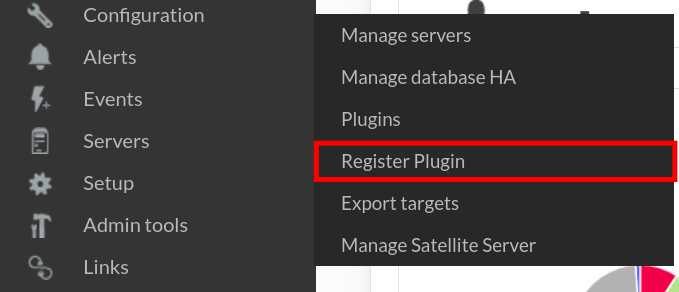](https://pandorafms.com/guides/public/uploads/images/gallery/2022-04/register-plugin.png)** Daremos a seleccionar archivo. **[](https://pandorafms.com/guides/public/uploads/images/gallery/2022-04/register-plugin2.png)** Seleccionaremos el fichero pspz2 que contiene el plugin **[](https://pandorafms.com/guides/public/uploads/images/gallery/2022-04/register1-postgresql.png)** Se nos mostrará un mensaje indicando que se ha registrado correctamente. **[](https://pandorafms.com/guides/public/uploads/images/gallery/2022-04/register2-postgresql.png)** Una vez registrado el plugin, lo veremos en el apartado plugins. [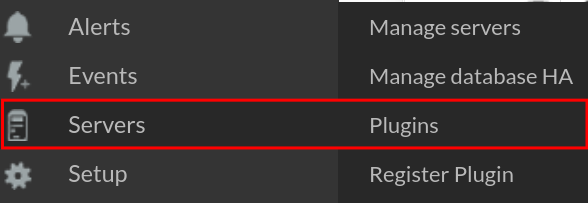](https://pandorafms.com/guides/public/uploads/images/gallery/2022-04/serversingles.png) Pinchando en el título del plugin se podrá acceder al menu de este. [](https://pandorafms.com/guides/public/uploads/images/gallery/2022-04/register3-postgresql.png) En macros aparecerán todas las que tiene el plugin, recuerda que no todas son obligatorias, solo las que así se especifican. [](https://pandorafms.com/guides/public/uploads/images/gallery/2022-04/register4-postgresql.png) Abajo se le podrá asignar el valor requerido a cada variable. [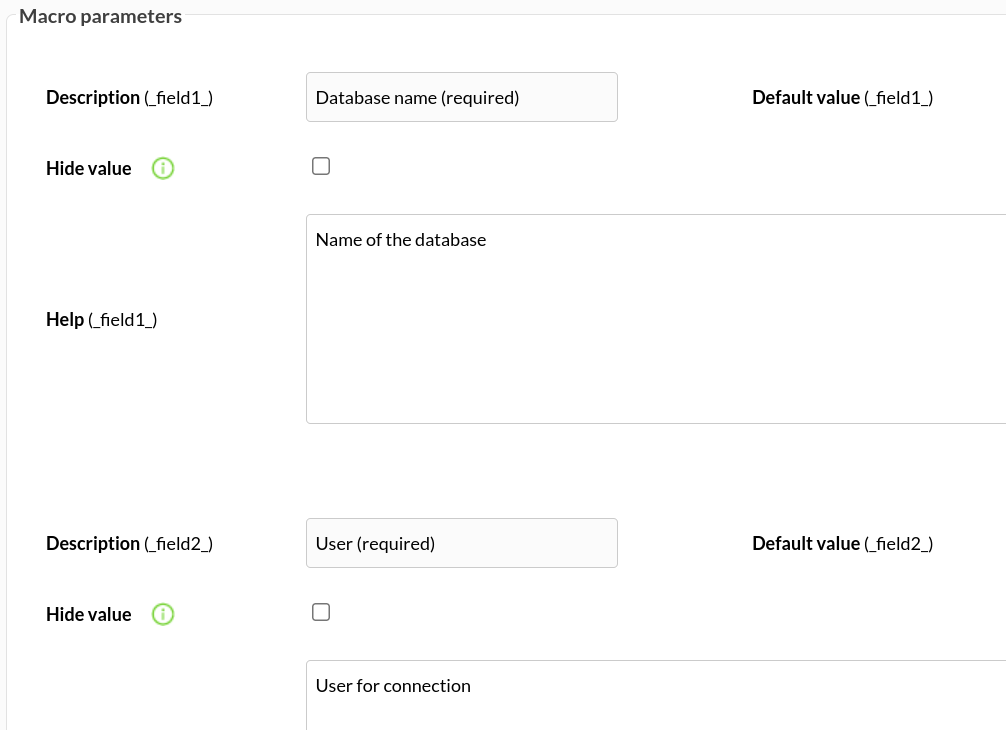](https://pandorafms.com/guides/public/uploads/images/gallery/2022-04/register5-postgresql.png) **Instalación manual** Iremos a servidores > plugins: [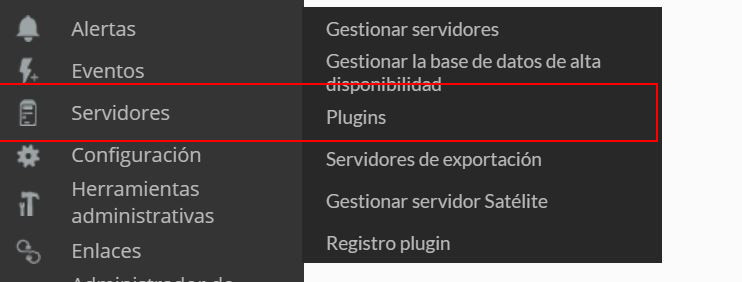](https://pandorafms.com/guides/public/uploads/images/gallery/2021-08/image-1629974405286.png) Pinchamos en añadir: [](https://pandorafms.com/guides/public/uploads/images/gallery/2021-08/image-1629974430627.png) Le ponemos en nombre y la descripción que se prefiera: [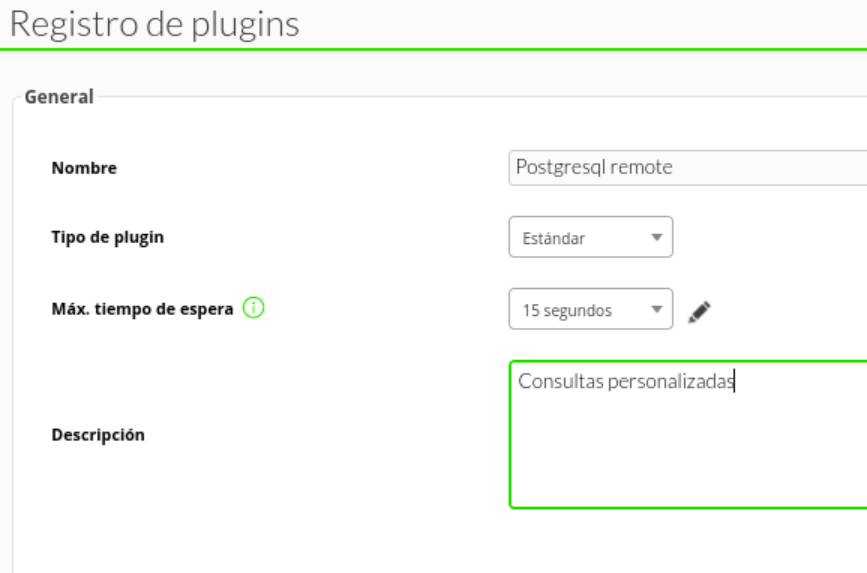](https://pandorafms.com/guides/public/uploads/images/gallery/2022-03/image-1646737918843.png) Metemos como comando la ejecución con la ruta del plugin: ``` /path_pandora_postgresql ``` [](https://pandorafms.com/guides/public/uploads/images/gallery/2022-03/image-1646738193972.png) Y en parámetros del plugin introduciremos estos seguidos de la macro "\_field\_", los obligatorios para que el plugin funcione son -d,-u,-p,-i,--port, --transfer\_mode y --conf. Definiremos estos con las macros abajo. **Database** [](https://pandorafms.com/guides/public/uploads/images/gallery/2022-03/image-1646741029424.png) **user** [](https://pandorafms.com/guides/public/uploads/images/gallery/2022-03/image-1646741076563.png) **password** [](https://pandorafms.com/guides/public/uploads/images/gallery/2022-03/image-1646741107573.png) **ip** [](https://pandorafms.com/guides/public/uploads/images/gallery/2022-03/image-1646741133355.png) **puerto** [](https://pandorafms.com/guides/public/uploads/images/gallery/2022-03/image-1646741160772.png) **conf** [](https://pandorafms.com/guides/public/uploads/images/gallery/2022-03/image-1646741187282.png) **transfer\_mode** [](https://pandorafms.com/guides/public/uploads/images/gallery/2023-08/image-1692351184433.png) Una vez hecho esto, daremos a "crear". Puedes comprobar que has introducido bien los valores ejecutando el comando de vista previa por terminal Si no da errores es que se ha introducido bien. Una vez hecho esto, solo queda llamarlo por lo que iremos a la vista de algún agente y crearemos un módulo de complementos: [](https://pandorafms.com/guides/public/uploads/images/gallery/2022-03/image-1646741530197.png) Le daremos un nombre y en el apartado "plugin" pondremos el que acabamos de configurar. [](https://pandorafms.com/guides/public/uploads/images/gallery/2022-03/image-1646741600061.png) Una vez hecho esto, damos a crear. Si el modulo se muestra con 1, quiere decir que se esta ejecutando correctamente [](https://pandorafms.com/guides/public/uploads/images/gallery/2022-03/image-1646741405902.png) # Módulos generados por el plugin El plugin creará un agente con el nombre que le hayamos puesto con el parámetro "--agent\_name" si no se usa este parámetro se quedara con "PostgreSQL" por defecto: [](https://pandorafms.com/guides/public/uploads/images/gallery/2022-03/image-1646739709089.png) En este agente se crearán un módulo por cada consulta personalizada especificada en pandora\_postgresql.conf, con el nombre que le hayamos asignado a cada una de estas. Por ejemplo el siguiente conf: ``` number_connections:SELECT count(*) FROM pg_stat_activity;:generic_data:Number of Connections or running backend connections_waiting_in_locks:SELECT count(*) FROM pg_stat_activity WHERE wait_event = 'Lock';:generic_data:Number of connections/backends waiting on locks connections_idle_in_transaction:SELECT count(*) FROM pg_stat_activity WHERE wait_event = 'idle in transaction';:generic_data number_users:SELECT COUNT(usename) FROM pg_stat_activity;:generic_data number_roles:SELECT count(*) FROM pg_roles;:generic_data psql_version:SELECT version();:generic_data_string num_blocks:SELECT COUNT(*) FROM pg_locks;:generic_data psql_diskspace:SELECT ROUND(SUM(pg_database_size(oid))/1024/1024) FROM pg_database;:generic_data number_commits:SELECT sum(xact_commit) FROM (pg_database AS db JOIN pg_stat_database sdb ON db.datname=sdb.datname) WHERE db.datname = 'postgres';:generic_data number_rollbacks:SELECT sum(xact_rollback) FROM (pg_database AS db JOIN pg_stat_database sdb ON db.datname=sdb.datname) WHERE db.datname = 'postgres';:generic_data tuples_returned:SELECT sum(tup_returned) FROM (pg_database AS db JOIN pg_stat_database sdb ON db.datname=sdb.datname) WHERE db.datname = 'postgres';:generic_data tuples_searched:SELECT sum(tup_fetched) FROM (pg_database AS db JOIN pg_stat_database sdb ON db.datname=sdb.datname )WHERE db.datname = 'postgres';:generic_data tuples_inserted:SELECT sum(tup_inserted) FROM (pg_database AS db JOIN pg_stat_database sdb ON db.datname=sdb.datname) WHERE db.datname = 'postgres';:generic_data tuples_updated:SELECT sum(tup_updated) FROM (pg_database AS db JOIN pg_stat_database sdb ON db.datname=sdb.datname) WHERE db.datname = 'postgres';:generic_data tuples_removed:SELECT sum(tup_deleted) FROM (pg_database AS db JOIN pg_stat_database sdb ON db.datname=sdb.datname) WHERE db.datname = 'postgres';:generic_data state:SELECT state FROM pg_stat_activity WHERE datname = 'postgres';:generic_data_string ``` Creará los siguientes módulos: [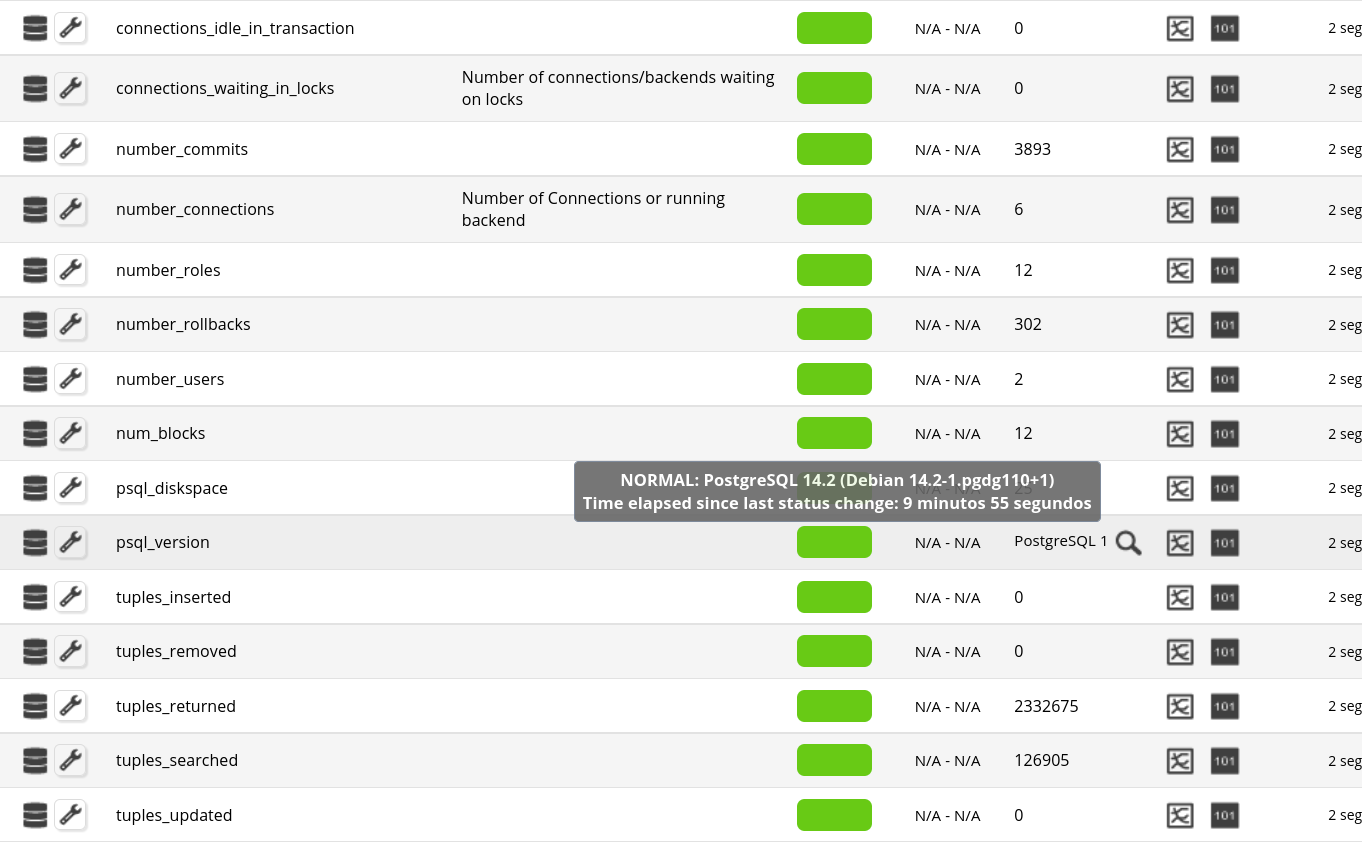](https://pandorafms.com/guides/public/uploads/images/gallery/2022-03/image-1646740864822.png)